Gold For Christmas – Gold’s Importance in Religion
Gold and Religion have always been symbolically linked in countless civilizations from antiquity to the present day. From religious artwork to religious symbolism, gold is unique among metals in being central to many of the world’s religions, and gold has long been associated with the divine sphere.
Gold In Christianity
During the festive season of Christmas, it is apt therefore to reflect on the importance of gold in religion. In the Christian tradition, gold appears in the story of Christmas and its association with the birth of Christ in Bethlehem. According to the Bible, when Jesus Christ was born to Bethlehem, a group of wise men (Magi) made a journey from the East to celebrate and worship the birth, bringing with them gifts of gold, frankincense and myrrh. The gift of gold was a symbol of wealth and power, but also, according to religious scholars, a symbol of Christ’s kingship on Earth.

In fact, throughout the Bible, gold is frequently mentioned, from the first book (Genesis) to the last book (Revelations), and everywhere in between. For example, the Book of Genesis refers to 4 rivers flowing out of the Garden of Eden, one of which, the Pishon, “flows around the whole land of Havilah, where there is gold.” (Genesis 2:10 and 2:11). And in the Book of Revelations, a description of a new Jerusalem describes “the street of the city was pure gold, as it were transparent glass” (Revelation 21:21).
While gold is attributed considerable value in the Bible and is frequently referred to as the most valuable substance on earth and the greatest form of wealth, it is also juxtaposed with spiritual value, so as to illustrate that spiritual value is beyond even the substantial material value of gold. For example, Psalm 119:127 says that: “Therefore I love your commandments more than gold, yes, more than fine gold!”
So it’s not surprising then that gold plays an important role in the Christian religion. In Christianity, gold has been extensively used to decorate churches, cathedrals and chapels, to fashion crosses, chalices and altar furniture, and as gold leaf to gild statues, adorn manuscripts, and to represent halos and divine light in Middle Age and Renaissance period art. Gold is also found on the gilded domes of some Christian Orthodox churches in Eastern Europe.
Gold’s Unique Role in Religions
But what does gold possess that gives it universal appeal to all the world’s major religions, and to ancient religious traditions throughout antiquity, such as in Ancient Egypt? And why in the hierarchy of metals, does gold take precedence over other all metals?
The reasons are many and varied. With its unique glow and yellow shine, gold is symbolic of the colour of the sun, and in religious art gold is associated with daylight and the energy of the divine.
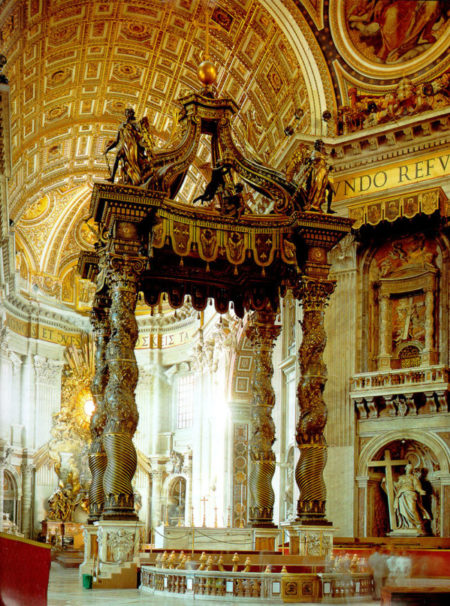
And because religions evolve and changes and are influenced by previous religious traditions, the special status of gold in a religious context has persisted down through history from one religion to another.
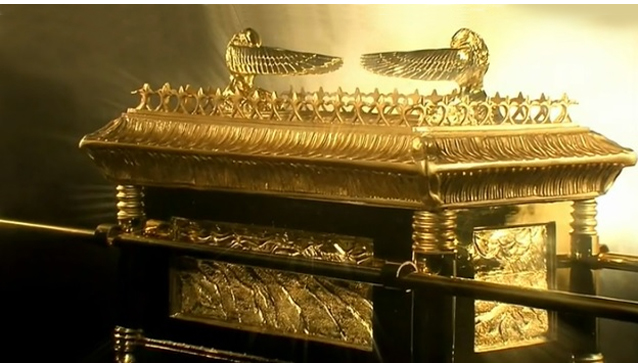
The Biblical Ark of the Covenant which was once stored in Jerusalem was said to be fully gilded in gold. And in Judaism, the symbolic menorah or lampstand is also often crafted from gold. Some of the Scriptures and Writings of Judaism also overlap with various texts of the Old Testament in the Christian Bible, so the references to gold in Hebrew Scriptures and Writings are also to some extent the same references to gold that are found in the Old Testament.
Gold In Islam
Gold has long had an intricate connection with Islamic culture with its role being shaped by the need to comply with Islamic teachings. Since usury is forbidden in Islam, a form of money, such as gold, that does not involve interest and usury evolved in the shape of the historical gold dinar coin as well as the Islamic silver dirham. This historical gold dinar in Islam was first produced in the seventh century. According to Islamic law, the dinar had to be made from 22k gold and have a weight of 4.25 grams. Since the dinar is gold, its weight determines its value, and it acted as a stable medium of exchange and not a paper promise, again complying with the word of the Quran.
In modern times, there has even been a revival of interest in the concept of this historic gold dinar in Malaysia. This has led to a number of initiatives where modern gold dinars were launched by Malaysia’s Kelantan and Perak states in 2010 and 2011. One side of the Perak gold dinar even features the design of the original gold dinar from the late seventh century AD. Modern gold dinars have also been issued by the Indonesian Islamic Mint Nusantara.
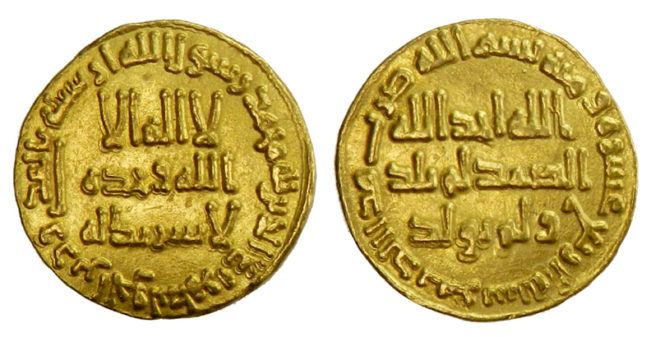
Under Shari’ah law, gold is also one of 6 Ribawi goods (along with silver, wheat, barley, salt, and dates) which must be sold based on their weight and measurement, so as to ensure transaction equality among trading parties. Speculation is also prohibited in Ribawi goods.
With the growth and proliferation of modern gold-based investment assets, there has been a need to update Sharu’ah guidance on the type of transactions in gold which meet Shari’ah compliance. This was achieved in December 2016, when the Accounting and Auditing Organisation for Islamic Financial Institutions (AAOIFI) issued a Shari’ah Standard on Gold which clarified Shari’ah complaint forms of gold that can be traded or used in gold-backed investment products.
Gold is also important in Islam as decoration and adornment. While Islam generally prohibits men from wearing gold (but not women), Islamic architecture also at times makes abundance use of gold in areas such as mosque decoration, for example, the Sheikh Zayed Grand Mosque in Abu Dhabi.
Gold in Hinduism
Gold is central to the Hindu religion and culture which is practised throughout India. Some major Hindu deities are associated with gold such as Brahma, the Hindu God of Creation who was born from a cosmic golden egg of creation. Gold is also symbolic of Lakshmi, the Hindu Goddess of wealth, prosperity and good fortune.
Therefore, gold is auspicious in Hinduism, which also explains why it is given as gifts for weddings and other special occasions, and gifted during festivals such as Dhanteras. For the same reason, gold is gifted in Hindu ceremonies, and devotees make regular donations and offerings of gold to Indian temples.
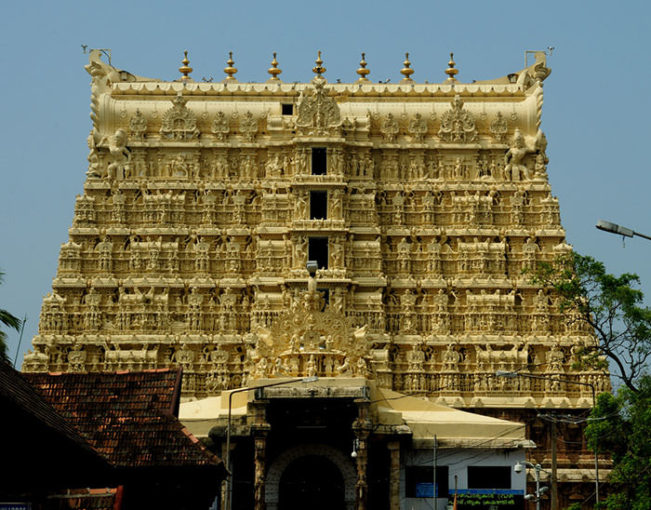
The Sree Padmanabhaswamy Temple in Kerala stores what is now considered the largest gold hoard in the world. This hoard was confirmed in 2011, when some of the subterranean vaults of this temple were opened by order of the Supreme Court of India. The Padmanabhaswamy Temple’s treasure, which contains gold ornaments, gold statues, huge amounts of gold coins, and even a gold throne, has been accumulated over thousands of years from temple donations including donations from former Indian dynasties and kings.
Some temples in India are even covered in gold, such as the golden temple of Sripuram in Tamil Nadu which is covered in 1500 kgs of pure gold, and the Sri Harmandir Sahib Golden Temple in Punjab – an important pilgrimage destination for Sikhs – whose sanctum is covered in gold foil.
Gold in Buddhism
Gold is also central to and venerated in Buddhism. The colour gold in Buddhism is associated with the golden rays of the sun, and of enlightenment.
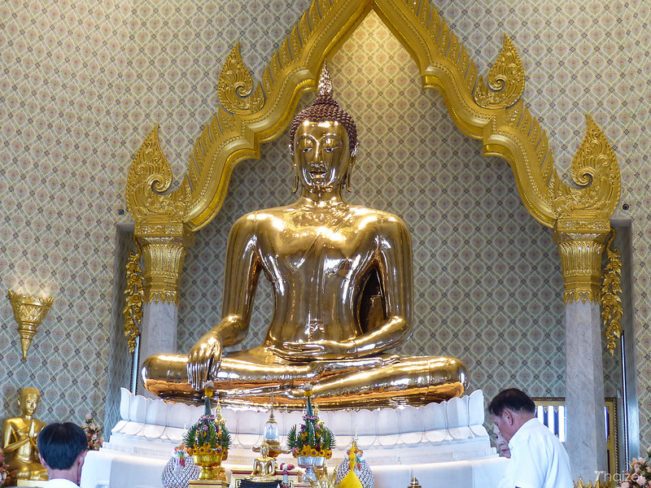
Buddhist culture features various famous solid gold Buddha statues, the largest of which is the Golden Buddha in the Temple of Wat Traimit in Bangkok, Thailand, which weighs 5.5 tonnes, and is 2 meters high. Buddhist statues in Tibetan regions are usually also painted with gold. In 2013, the former king of Thailand even donated nearly 300 kgs of gold to decorate the spire of the Buddhist Mahabodhi temple in Bodh Gaya, India.Gold is also used to decorate the famous Zen Buddhist Temple of the Golden Pavilion in Kyoto, which is covered in pure gold leaf.
Gifting of Gold for the Holiday Season
As gold is rare and precious, it has always and will always make an impressive gift which will be cherished and remembered. With its intrinsic connection to Christmas and the Christian tradition, as well as deep association to all the world’s other major religions, the gift of gold is also a thoughtful one that transcends even the material value of the actual gold content. It may be of interest then to know of a selection of bullion gold bars and bullion gold coins that are ideal for gifting, and that will create a lasting impression for those that receive them.
PAMP is one of the world’s most prestigious and most sought-after names for high quality gold bars. Fabricated in Switzerland, PAMP’s 99.99% pure gold bars make ideal gifts, such as a 100 gram minted gold bar presented in a stylized and secure presentation card, or the more traditional and rugged 100 gram cast gold bar, each of which is stamped on the front with its own serial number. PAMP also makes a whole range of smaller minted gold bars which also make great gifts, such as an attractively priced 10 gram minted gold bar.
For customers with a preference for gifting Tola denominated gold bars, PAMP’s 5 Tola gold bar is an affordable weight size between the 50 gram and 100 gram bar weights.
Divisible gold products, often known as combi gold or multi gold, are ideally suited for gold gifting as they consist of a series of detachable gold bars, which can be individually gifted. The 10 gram gold bar MultiDisc from the prestigious Heraeus gold refinery in Hanau, Germany, is a tamper-proof rotatable storage and display disc containing 10 individually minted 1 gram gold bars. This disc’s design allows individual 1 gram gold bars to be dispensed, so is an ideal product for those wishing to gift small gold bars to a series of recipients.
In a similar vein, the 50 gram Gold CombiBar from the famous Swiss refinery Valcambi can be sub-divided into 50 x 1 gram gold bars. Gold CombiBars comprise a 10 x 5 rectangle of 1 gram gold bars about the size and width of a credit card, that can also fit in a wallet. Each Combibar’s 1 gram constituent bars are held together by grooves within the larger gold bar which can be individually attached and given as gifts.
Each 1 gram gold bar segment is also embossed with the Valcambi logo and the segment’s weight and fineness, so when detached, each segment still carries Valcambi’s guarantee of authenticity.
One of the world’s most highly regarded bullion gold coins is the gold Canadian Maple Leaf, produced by the Royal Canadian Mint in Ottawa, Canada. Fabricated in four sizes from a 1 ounce gold coin, through to 0.5 ounce, 0.25 ounce and 0.1 ounce, the gold Maple Leaf range offers an attractive gifting options at a series of price levels, and is a handsome and thoughtful gift for the recipient.
Another timeless gift in the gold bullion coin category is the 1 ounce Austrian Gold Philharmonic coin, produced by the prestigious Austrian Mint, one of the oldest mints in Europe. This 1 ounce gold coin, which is non-circulating legal tender in the Euro zone, celebrates the Vienna Philharmonic Orchestra which is world-famous for its New Year’s Eve and New Year’s Day concerts in Vienna, Austria.
Popular Blog Posts by BullionStar
 How Much Gold is in the FIFA World Cup Trophy?
How Much Gold is in the FIFA World Cup Trophy?
 Essentials of China's Gold Market
Essentials of China's Gold Market
 Singapore Rated the World’s Safest & Most Secure Nation
Singapore Rated the World’s Safest & Most Secure Nation
 Infographic: Gold Exchange-Traded Fund (ETF) Mechanics
Infographic: Gold Exchange-Traded Fund (ETF) Mechanics
 BullionStar Financials FY 2020 – Year in Review
BullionStar Financials FY 2020 – Year in Review
 Gold, Geopolitics, and the Global Financial Realignment: Insights from Dr. Nomi Prins
Gold, Geopolitics, and the Global Financial Realignment: Insights from Dr. Nomi Prins
 Silver’s Breakout and What It Signals for Gold: Florian Grummes on the Metals Market Shift
Silver’s Breakout and What It Signals for Gold: Florian Grummes on the Metals Market Shift
 The Big Long: Gold’s New Chapter – A Conversation with Ronald-Peter Stöferle
The Big Long: Gold’s New Chapter – A Conversation with Ronald-Peter Stöferle
 How to Tell If Gold Is Real – What You Need to Know About Fake Gold, Testing Methods, and Trusted Dealers — A 2025 Guide
How to Tell If Gold Is Real – What You Need to Know About Fake Gold, Testing Methods, and Trusted Dealers — A 2025 Guide
 Is It Too Late to Buy Gold in 2025? 7 Signs Pointing to Gold’s Next Major Rally
Is It Too Late to Buy Gold in 2025? 7 Signs Pointing to Gold’s Next Major Rally






 BullionStar
BullionStar 1 Comments
1 Comments










